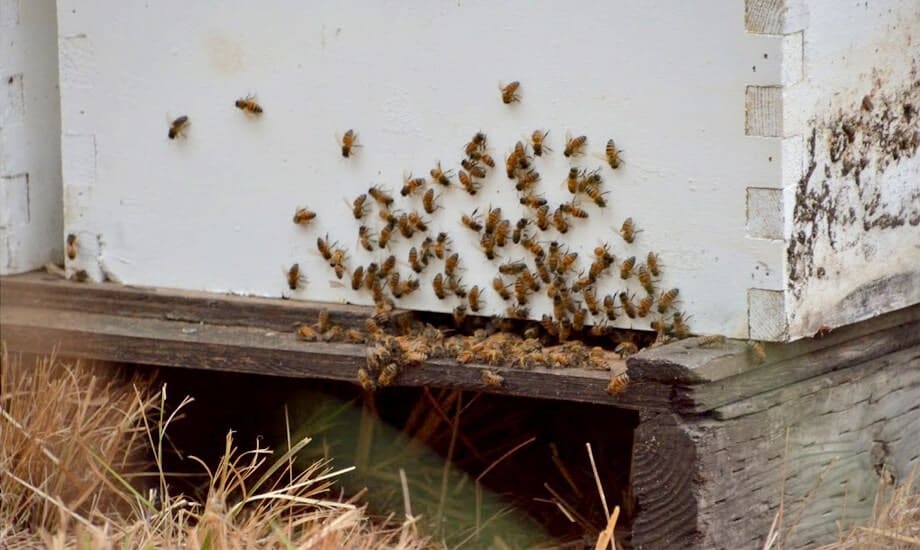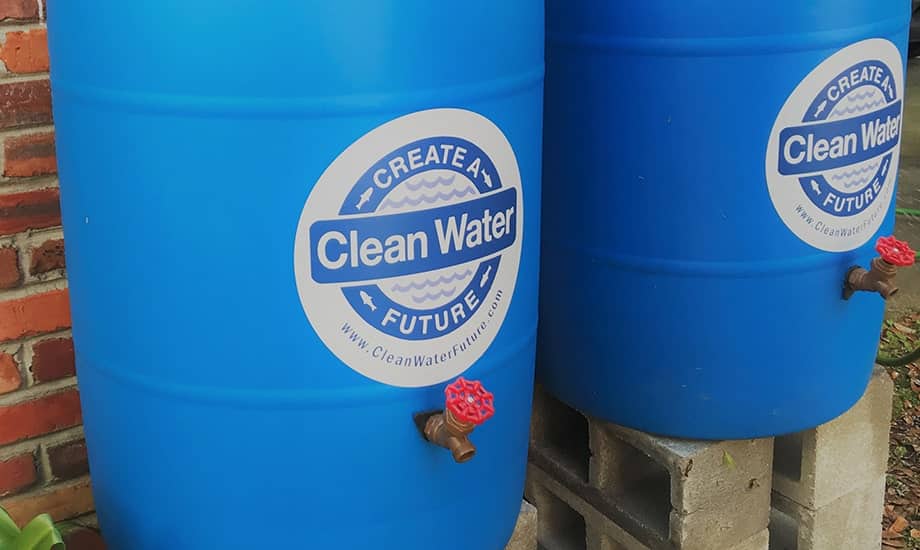Warum Biodiversität wichtig ist
Greif konzentriert sich auf die Artenvielfalt, um eine gesunde Umwelt zu erhalten. Indem wir Maßnahmen ergreifen, um die möglichen Auswirkungen unserer Aktivitäten auf Ökosystemleistungen und Artenvielfalt zu verstehen und zu bewältigen, sind wir in der Lage, natürliche Ressourcen zu bewahren. Durch unsere Landmanagementaktivitäten und -dienstleistungen widmen wir uns der Erhaltung der Artenvielfalt und der Ökosystemfunktionen der Erde, um die Wiederherstellung von Wildtieren und Lebensräumen zu fördern.
Führung
244,600
Bewirtschaftete Fläche
Wir betreiben in unseren Betrieben in Alabama, Louisiana und Mississippi nachhaltige Forstwirtschaft und bieten branchenübergreifend Dienstleistungen zur Verbesserung der Landbewirtschaftung an.
Seit Dezember 2008 hält sich Soterra, LLC, unsere Tochtergesellschaft für Landmanagement, an die Grundsätze der Sustainable Forestry Initiative (SFI) und befolgt die von jedem Bundesstaat für seine bewirtschafteten Waldflächen festgelegten Best Management Practices. Die Wälder von Soterra bieten Lebensraum für Wildtiere, Forstwirtschaftsdienste und dienen als Raum für die Freizeitnutzung. Soterra ist im Südosten der USA tätig und bewirtschaftet 244.600 Acres Waldland in Alabama, Louisiana und Mississippi. Im Jahr 2020 haben die Wälder von Soterra über 1.705.000 Tonnen CO2 gebunden.
SFI und bundesstaatsspezifische Best Management Practices bestimmen Soterras Ernte- und allgemeine Forstwirtschaftspraktiken, um sicherzustellen, dass wir alle gesetzlichen Anforderungen einhalten und in unserem gesamten Betrieb, wann immer möglich, die höchsten Standardpraktiken anwenden. Wir wenden eine nachhaltige Erntemethode an, die auf einer 30-jährigen Rotation unserer Waldflächen basiert. Vor der Ernte eines Standorts führen wir eine gründliche Überprüfung des Gebiets durch, um den Gesamtwert der Artenvielfalt des Standorts zu bewerten und alle geschützten Tier- oder Pflanzenarten zu identifizieren, die von der Ernte betroffen sein könnten. Wenn Bereiche innerhalb eines Standorts als von hohem Biodiversitätswert eingestuft werden oder als Lebensraum für eine geschützte Art dienen, werden entsprechende Pufferzonen eingerichtet, um sicherzustellen, dass die Art nicht beeinträchtigt wird, und bei Bedarf werden die Vorbereitungs- und Erntemethoden entsprechend geändert. Bis heute wurden keine von Soterra verwalteten Flächen als von hohem Biodiversitätswert eingestuft, seit 2008 wurden jedoch neun gefährdete Arten in unseren geografischen Gebieten identifiziert und bei Bedarf geschützt. Im Jahr 2020 wurde die Schwarzkiefernatter auf von Greif verwalteten Grundstücken neu als gefährdete Art eingestuft.
Wir arbeiten daran, unsere Landbewirtschaftungspraktiken wann immer möglich durch Technologie zu verbessern. Im Jahr 2007 begannen wir mit der Implementierung geografischer Informationssysteme, um unsere Pflanz-, Pflege- und Ernteaktivitäten zu verfolgen, und nutzten Drohnentechnologie, um den Zustand unserer Wälder effizienter und sicherer zu beurteilen. Wir haben diese Bemühungen im Jahr 2020 weiter ausgebaut, um eine bessere Standortvorbereitung für die Ernte zu unterstützen und potenzielle Schädlingsbefälle zu bewerten. Bis heute haben unsere Drohnenpiloten über 100.000 Acres Firmen- und Privatland kartiert.
Im Jahr 2020 verzeichneten wir ein kontinuierliches Wachstum bei unseren Beratungsleistungen, die uns seit 2016 dabei geholfen haben, auf insgesamt über 18.000 Acres auf Privatgrundstücken Bäume zu regenerieren und zu pflanzen. Wir arbeiteten weiterhin mit Landbesitzern zusammen, um verantwortungsvolle Landbewirtschaftungspraktiken umzusetzen, und veranstalteten Feldtage mit Landbesitzerverbänden unter Einhaltung der Abstandsregeln, wobei wir uns auf die Aufklärung über die Genetik von Setzlingen, bewährte Verfahren zur Wiederaufforstung und den Einsatz von Drohnentechnologie konzentrierten.
Im Jahr 2021 werden wir unsere Dienstleistungen weiter diversifizieren, um unser Geschäft weiterhin mit nachhaltigen Praktiken führen zu können. Dazu gehören eine Initiative, bei der unser Landmanagementteam für jede gefahrene Meile einen Baum pflanzt, und Freiwilligentage, an denen sich unsere Kollegen in den Gemeinden engagieren können, in denen sie arbeiten. Wir werden unsere Landmanagementpraktiken weiter verbessern und Techniken evaluieren, die eine stärkere Kohlenstoffbindung unterstützen und so den gesamten CO2-Fußabdruck von Greif ausgleichen.
Studie zur Verbesserung des Lebensraums von Bestäubern
Das Jahr 2013 markierte den Abschluss eines mehrjährigen Bestäuberforschungsprojekts, das auf den Waldflächen von Greif/Soterra LLC in Süd-Mississippi durchgeführt wurde. Die Studie wurde in Zusammenarbeit mit der Pollinator Partnership und NAPCC – den weltweit führenden Experten für Bestäubungsfragen – durchgeführt, um herauszufinden, wie Bestäuber die Nahrungsverfügbarkeit von Wildtieren in Waldgebieten beeinflussen, welchen Mehrwert die Ansiedlung von Honigbienen und Imkern in der Landschaft bietet und um die beste Managementpraxis für Ökosystemdienstleistungen in Waldgebieten zu ermitteln.
Die Studie ergab einige interessante Empfehlungen für nachhaltige Waldbewirtschaftungspraktiken, die Waldbesitzern, Bestäubern, der lokalen Tierwelt und Ökosystemen gleichermaßen zugute kommen sollten. Greif engagiert sich für seine Plattform für nachhaltige Landnutzung und wird dazu beitragen, alle daraus resultierenden Veröffentlichungen weltweit an Industriepartner, Regulierungsbehörden und Mitglieder der akademischen Gemeinschaft zu verteilen, um ein positives Umweltmanagement in Waldsystemen zu beeinflussen.
Im Jahr 2013 zeichnete die Sustainable Forestry Initiative (SFI) Soterra LLC und die Pollinator Partnership für diese Forschung mit dem begehrten Conservation Leadership Award aus. Auch der Bundesstaat Louisiana würdigte die Bemühungen im Rahmen des Programms, indem er im Frühjahr 2018 eine landesweite Pollinator Week ausrief. Ab 2021 setzt Soterra LLC seine Unterstützung für Bildung, Öffentlichkeitsarbeit, Naturschutz und wissenschaftliche Forschung im Zusammenhang mit der Bedeutung von Bestäubern in unserem Ökosystem fort, indem es sein Engagement in der Pollinator Partnership als aktives Vorstandsmitglied aufrechterhält. Weitere Informationen finden Sie in unserem Artikel in

Regentonnen-Programm erhält Stewardship Environmental Award
Im Jahr 2018 ging Soterra eine Partnerschaft mit dem National Estuary Program ein, um gespendete Greif-Fässer zum Sammeln von Regenwasser zu verwenden. Im Rahmen des Programms wird jedes Fass mit einem Regenfass-Umrüstsatz ausgestattet, um Regenwasser zu speichern, aufzufangen und sinnvoll zu nutzen. Die Fässer werden in verarmten Gebieten mit historisch hohen Betriebskosten aufgestellt, die zudem anfällig für Überschwemmungen und Wasserverschmutzung durch übermäßigen Wasserabfluss sind. Bis Ende 2021 werden in der Gemeinde 200 Fässer aufgestellt, die 260.000* Gallonen Wasser liefern können. Im Jahr 2019 erhielten wir in Anerkennung des Programms einen Environmental Stewardship Award von Partners for Environmental Progress.
*Laut der US-Umweltschutzbehörde können in den Sommermonaten mit einer Regentonne 1.300 Gallonen Wasser gespart werden.





